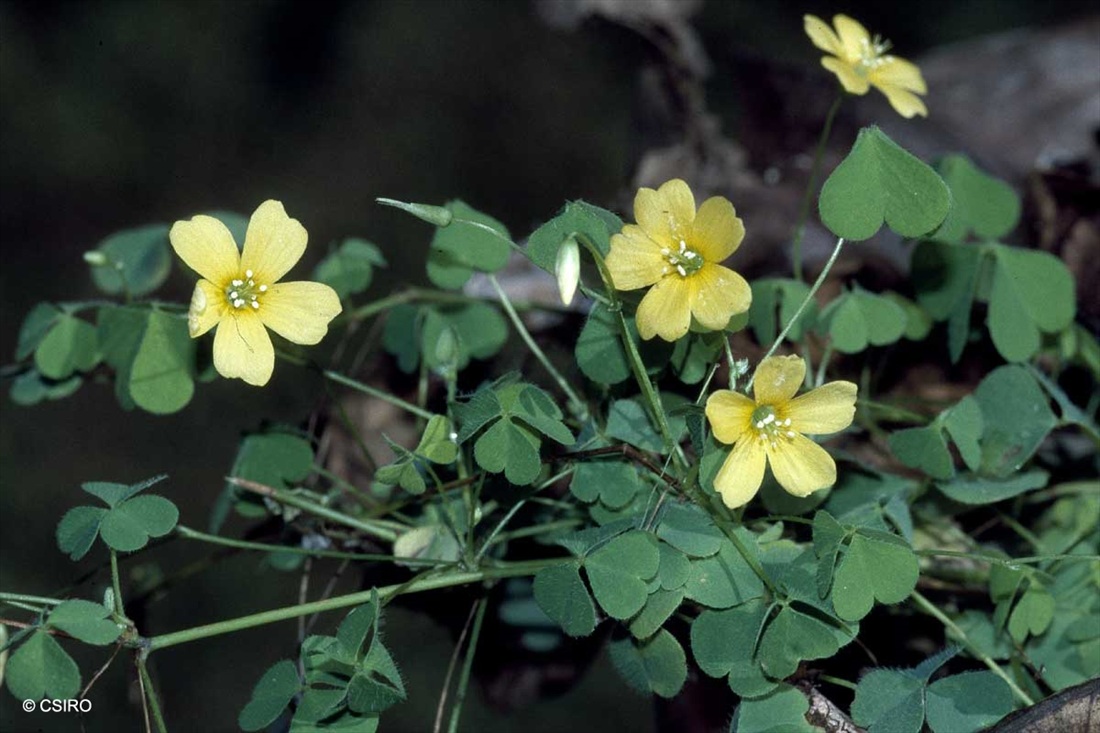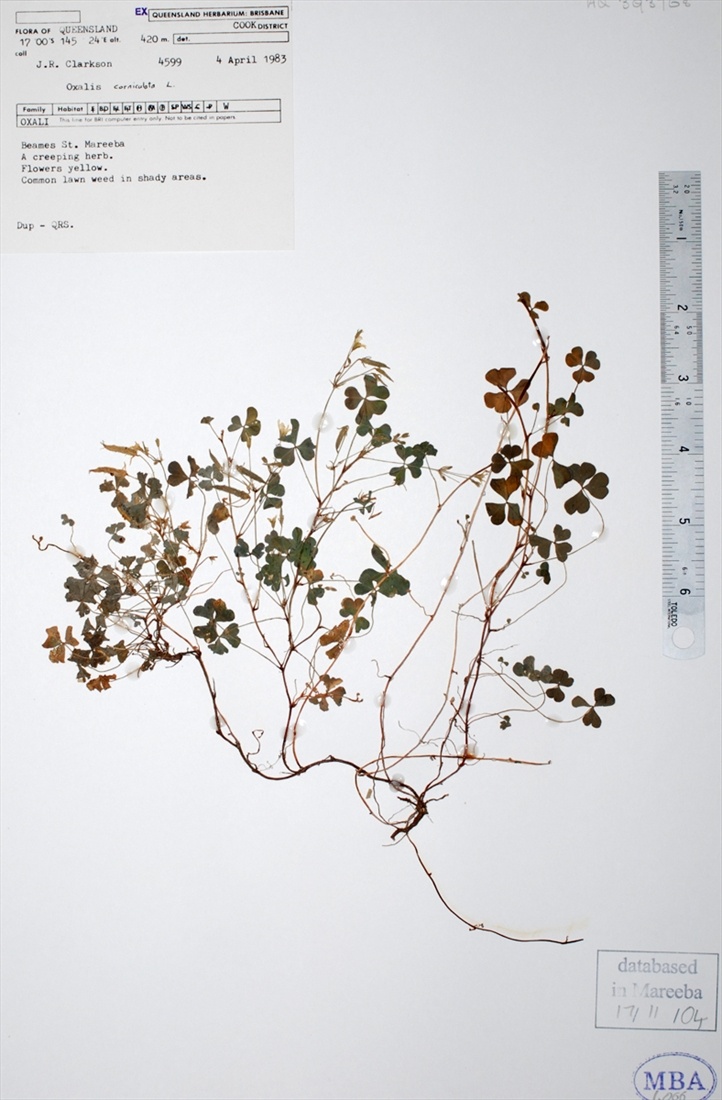Australian Tropical Rainforest Plants - Online edition
Oxalis corniculata L.



Linnaeus, C. (1753) Species Plantarum 1: 435. Type: Habitat in Italia, Sicilia.
Yellow Wood Sorrel
Annuals or short-lived perennials. Stems to 50 cm but often shorter, creeping, ascending to semierect, variably pubescent with adpressed simple hairs. Rootstock a slender taproot, sometimes woody; stems several, freely rooting at nodes in contact with soil; stolons absent. Stipules small, rectangular to auriculate.
Leaves alternate or pseudoverticillate; petiole 1-8(-13) cm, hairy; leaflet blades obcordate, 0.3-1.8 × 0.4-2.3 cm, green or suffused purplish red, variably adaxially and abaxially pubescent, apex deeply emarginate, incised to half way.
Inflorescences umbellate, (2-)1-5(-7)-flowered; peduncle usually slightly longer than petioles; bracts linear-lanceolate, 2-4 × ca. 1 mm. Pedicel 4-15(-20) mm, deflexed or horizontal in fruit, densely strigose. Sepals oblong-lanceolate, 3.5-5 × 1.2-2 mm, margin ciliate especially at apex. Petals bright yellow, oblong-obovate, 6-8 × 3-4 mm. Filaments fused at base. Ovary puberulous.
Capsule long cylindric, 8-25 × 2-3 mm, 5-sided, strigose with abundant simple hairs and a few septate hairs on dehiscence sutures. Seeds brown to brownish red, glossy, 5-14 seeds per locule, ovoid-oblong, 1-1.5 × 0.8-1 mm, flattened, with prominent transversely ridges and tubercles.
Features not available.
A weed of cultivation, gardens, lawns and disturbed ground; a declared noxious weed. Toxic to livestock (Webb 1948).





